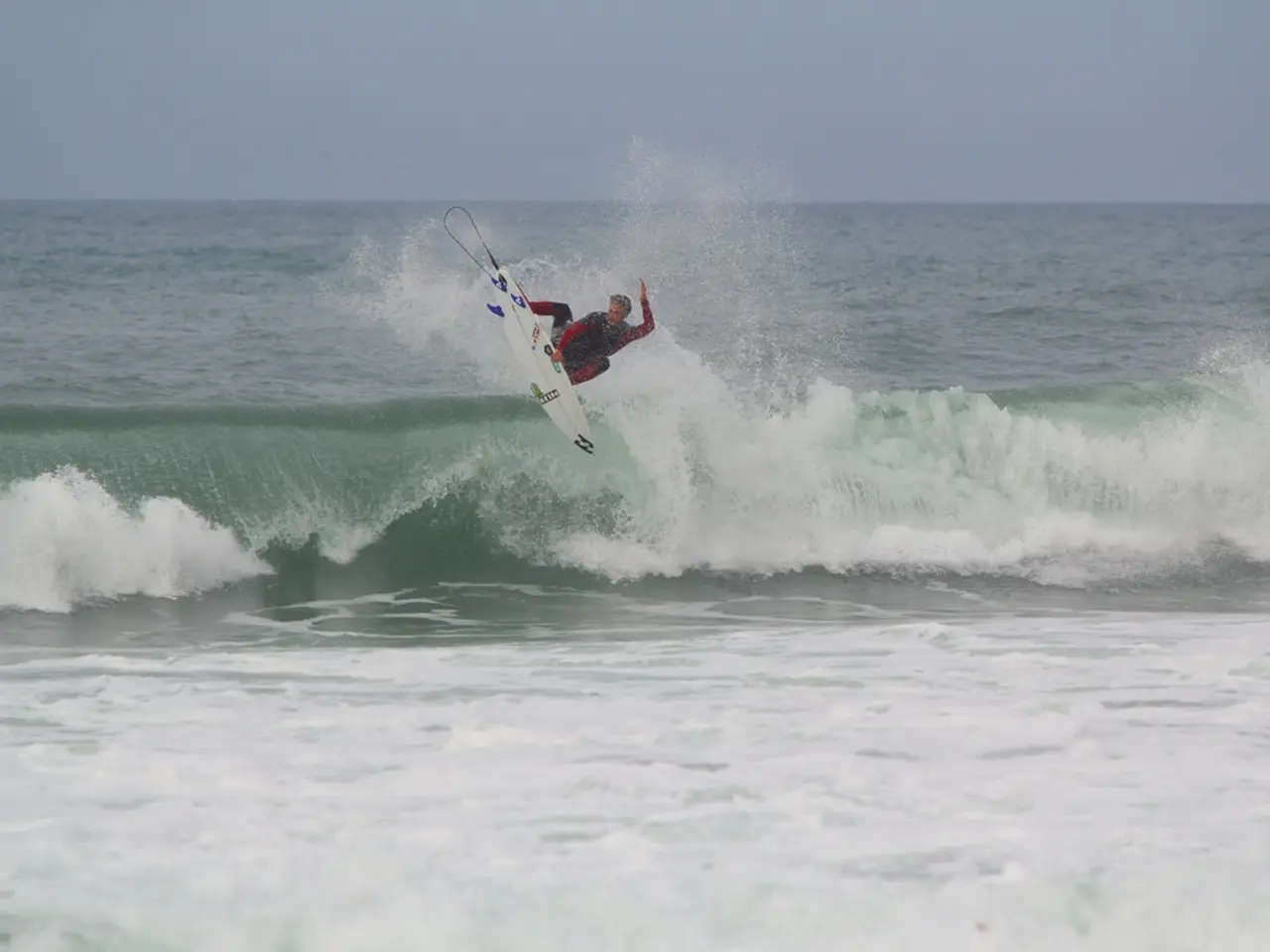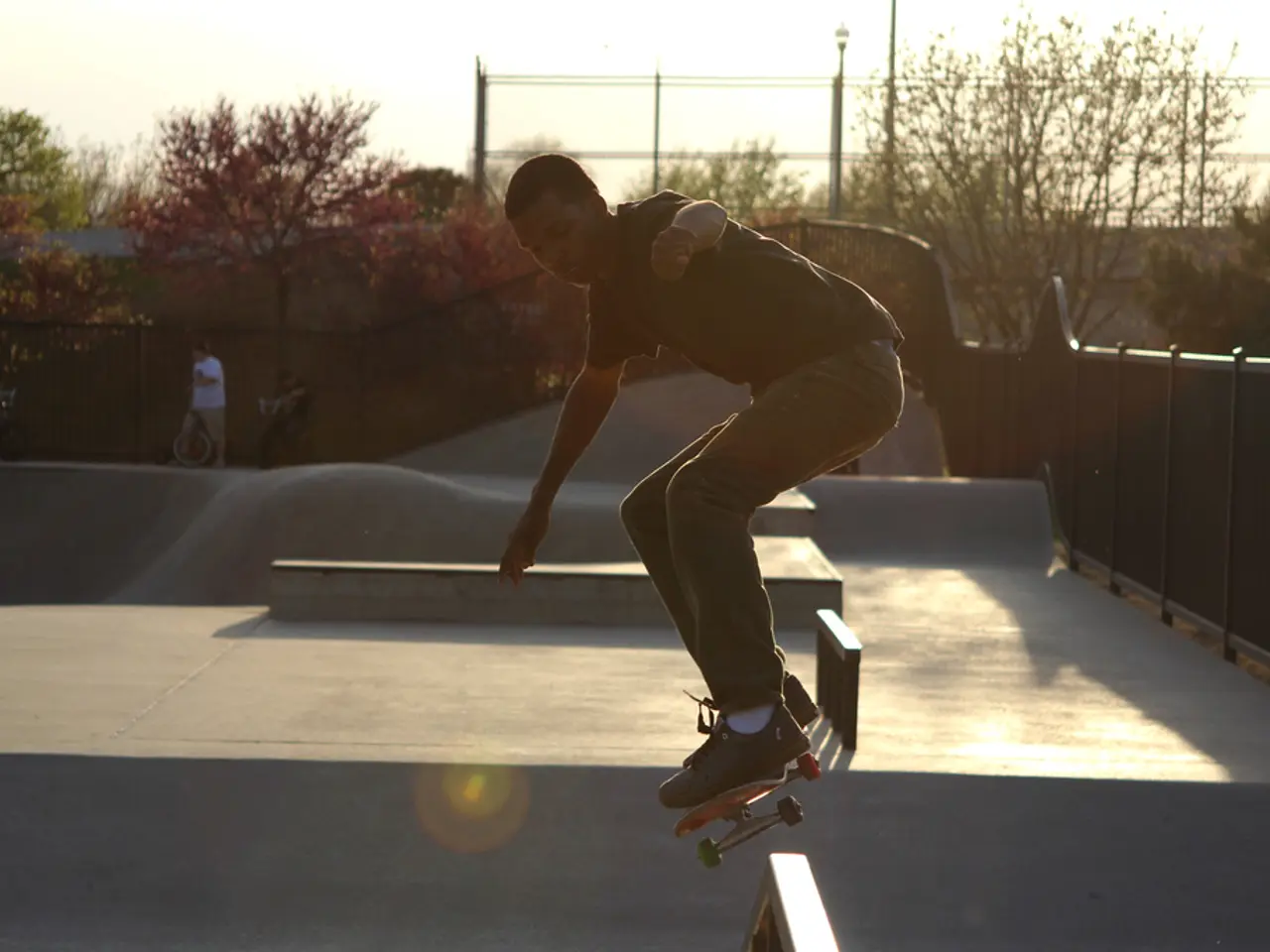Daring Bridge Jump by Young Man in Assam sparks public disapproval: Questionable Extreme Sport Videos?
In a chilling display of reckless behavior, a young individual was filmed performing a daring stunt on the Dhola-Sadiya Bridge, one of India's longest and most vital bridges. The stunt, which involved swinging from the railing of the bridge, has caused widespread anxiety and outrage, as it not only risks the life of the individual but also threatens the bridge's structural integrity.
The stunt is a symptom of the pressure to stand out in the digital world, where visibility is highly valued. It is a reflection of the silent pressures faced by the youth in the digital age, as they strive for online fame and notoriety.
Factors contributing to such risky behavior include youth unemployment, boredom, peer pressure, and a desire to be "seen" in a hyper-connected world. Some young people undertake dangerous stunts on public infrastructure primarily to gain social media fame, driven by the pressure to attract attention, increase followers, and monetize their online presence through likes and views.
Research into "kidfluencing" highlights the blurred lines between entertainment and exploitation, showing how children and youth may be pushed into hazardous activities under the guise of playful content creation. The social media economy converts influence into profit, motivating users—including young "kidfluencers"—to create extreme or risky content to stand out and secure lucrative brand deals or sponsorships.
Platforms tend to promote content that is shocking or controversial, increasing visibility and engagement, which encourages users to perform ever more daring acts for spectacle. Young people seek social acceptance and identity affirmation through online notoriety, sometimes prioritizing virtual fame over personal safety.
Locals are horrified by the stunt, and calls are intensifying for authorities to trace the people involved and enforce strict action. The goal is not just to punish, but to set a 'precedent'. Experts have warned that irresponsible acts on key infrastructure could lead to deadly accidents.
The stunt has inspired possible copycats, underscoring the need for immediate action. The video of the stunt has sparked deep discomfort online, despite scoring thousands of views.
It's important to remember that the pursuit of visibility and career goals should never come at the cost of safety and responsible behavior. This incident serves as a reminder of the need for caution and responsibility in the digital age. No arrests or official statements have been made regarding the stunt, but it is hoped that swift action will be taken to ensure the safety of our public infrastructure and the wellbeing of our youth.
[1] Smith, A. (2020). The Dark Side of Influencer Marketing: Exploitation of Child Influencers. The Guardian. [2] Johnson, B. (2021). The Psychology of Social Media Influence: Why Young People Risk Their Lives for Online Fame. Psychology Today. [3] Williams, J. (2019). Kidfluencers: The Rise of Child Influencers and the Ethical Concerns. The New York Times. [4] Koh, L. (2020). The Algorithmic Amplification of Controversial Content: Implications for Social Media Users and Society. Journal of Communication. [5] Chen, Y. (2021). The Impact of Social Media on Mental Health and Wellbeing of Young People. British Journal of Psychology.
- In an attempt to gain online fame and notoriety, some young individuals, driven by the pressure to attract attention, increase followers, and monetize their online presence, perform daring stunts on social media, often involving risky behavior and potential harm to public infrastructure.
- The influence of social media, especially its tendency to promote shocking or controversial content for increased visibility and engagement, contributes to the rising trend of young people prioritizing virtual fame over personal safety, even if it means undertaking dangerous stunts or exploitative activities, like "kidfluencing".








